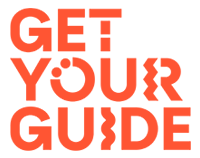The Khmer language has a rich history and is closely linked to Cambodian culture. It is the mother tongue and official language in Cambodia. It is spoken by around 16 million people. Of the 157 Austroasiatic (artificial word from the Latin auster “south” and Asia) languages, only Khmer and Vietnamese have the status of national languages. Around 130 of the 157 languages belong to the group of “Mon-Khmer” languages.
Cambodian or Khmer?
As we understand it, Cambodian goes with Cambodia just like Italian goes with Italy. Which is also ok. In Cambodia, things are a little different. Because the answer to the question: “What language is spoken in Cambodia?” is “Khmer”.
Khmer refers to the people of Cambodia, their language and script. Just as Italians as an ethnic group make up the entirety of people with Italian as their mother tongue, so do the Khmer in Cambodia.
Sanskrit and Pali origins
While the actual Khmer words consist of only one or two syllables, there are numerous multi-syllabic words from ancient Indian Sanskrit and Pali due to the languages of Mahayana and Theravada Buddhism. The oldest written monument from the province of Takeo in 611 AD is evidence of this.
In his article “Sanskrit Khmer“, Mark Moore states that the term “loanword” does not fully capture the depth of the relationship between Sanskrit and the Khmer language.
When it comes to politeness in Cambodia, and especially in the language, there are a few things to bear in mind. It starts with the greeting. While in Western cultures shaking hands symbolizes an equal rank of both conversation partners (even if this is not the case), the Khmer distinguish the social hierarchy by sampeah.
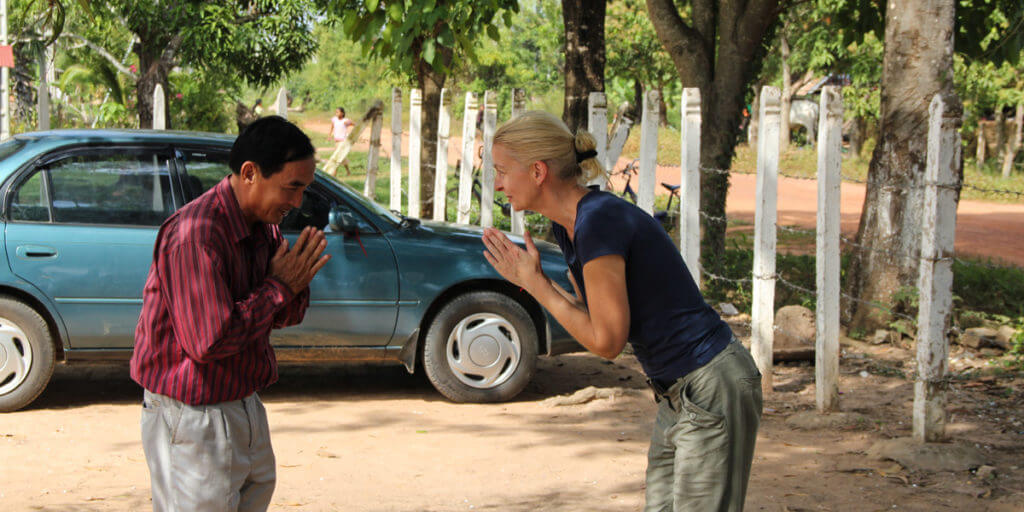
Depending on rank and respect towards interlocutors, the fingertips of the folded hands point under the chin or towards the forehead. The highest-ranking people include the king and his mother, for example. Important: Don’t forget to smile!
Popular pages: Discover Cambodia
Respect in the Khmer language
Among Cambodians, polite phrases such as “please” សូម (soum) are simply not used towards people of the same age. However, it is mandatory to use such terms with older people. This is especially true if you are asking for something. As a visitor to the country, it is generally not wrong to use សូម to emphasize politeness.
Similar to us, people greet each other among friends in Khmer with a “hello” សួស្តី (sousdey). If you’re not quite sure, the formal variant “good day” ជំរាបសួរ (joomreabsour) is the way to go.
It is deeply rooted in Cambodian culture to take care of others, especially elders and higher-ranking people. This is also reflected in the language. After the first greeting, it is considered polite to inquire about your well-being by asking “how are you” អ្នកសុខសប្បាយទេ? (neak sok sabbay dte?). The answer to this is usually “I’m fine, thank you” ខ្ញុំសុខសប្បាយទេ អរគុណ (knyom sok sabbay, orkun) before the actual conversation begins.
Two worlds between the written and spoken word
On the whole, Khmer is written the way it is spoken. So it happens here and there that a written letter does not exist in the pronunciation. There doesn’t seem to be a real rule. Here it is simply a matter of learning by heart.
As far as the difference between the written and spoken word is concerned, there are other special features. Let’s take a look at the Angkor Enterprise website. There, under the main heading, the line “Number of foreign tourists who bought Angkor tickets” can be read in English. In Khmer it looks like this: ចំនួនអ្នកទេសចរបរទេសដែលបានទិញសំបុត្រចូលទស្សនារមណីយដ្ឋានអង្គរ
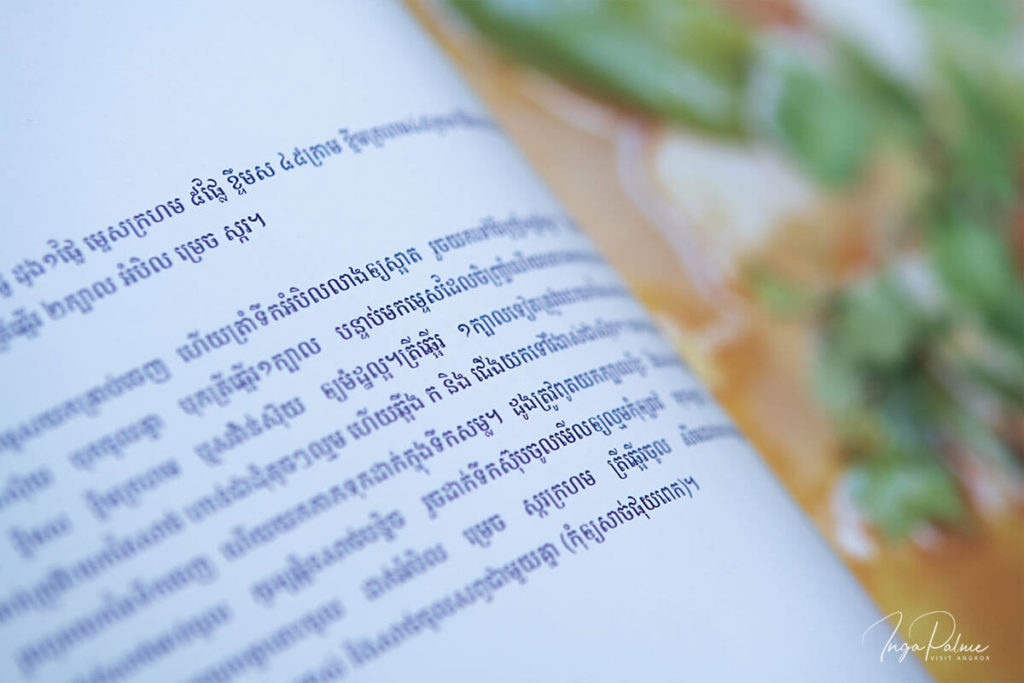
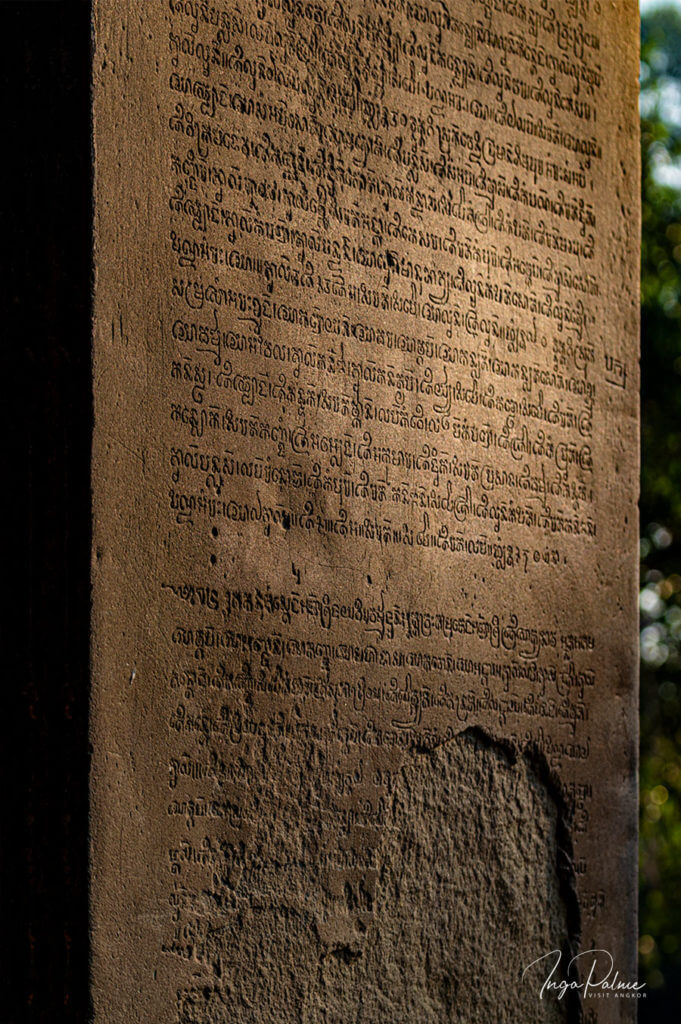
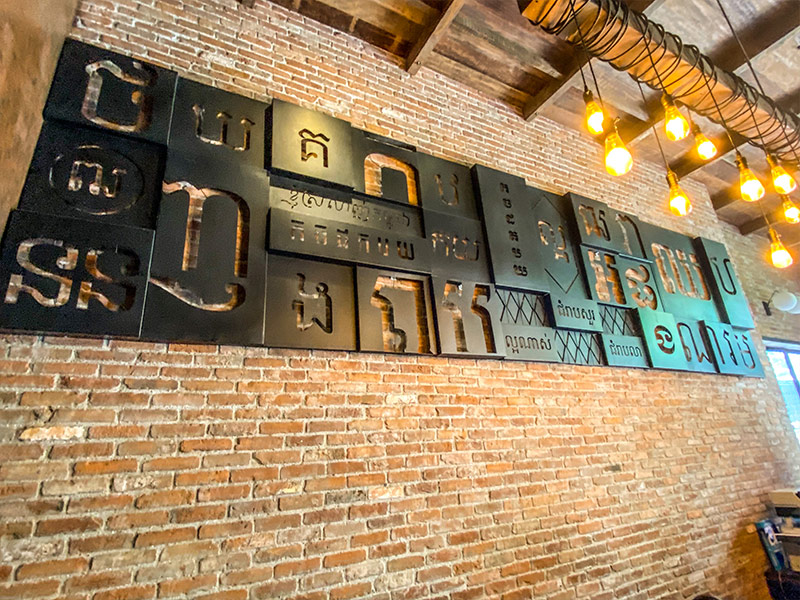
A whole sentence without any sign of a single hyphenation. The rule in Khmer script is: there is no such thing as ONE rule. Spaces can be placed as it suits you. The end of a sentence is marked by a ។. At this point, you can breathe in again.
However, if you follow this rule to the letter, reading a passage about Cambodian New Year in Cambodian Wikipedia is likely to leave you breathless. Although there are a few spaces here and there in the text, a ។ at the end of the sentence can only be seen after several lines. Reading more than 10 lines out loud without breathing is probably a complicated if not impossible task.
Some elements of the Khmer language are romanized. You can find out what these are with further information in this PDF document.
Subject, predicate, object in the Khmer language
In principle, Khmer follows the structure “subject, predicate, object”. “I am going to Angkor Wat” in Khmer is ខ្ញុំ ទៅ អង្គរវត្ត។ (khnyom dteu Angkor Wat – I am going to Angkor Wat). Adjectives and pronouns always come after a noun. Sentences like “Next Saturday I will go to the market with my mother.” are ថ្ងៃសៅរ៍ក្រោយ ខ្ញុំ នឹង ទៅ ផ្សារ ជាមួយ ម្តាយខ្ញុំ ។ Word for word it translates as “Next Saturday I’m going to the market with my mother.”
Here is another example with the sentence “Both lived together in a beautiful, old and cozy house” from my story “The Flea and the Bear”, which I wrote a few years ago.
| ពួកគេ | ទាំងពីរនាក់ | បានរស់នៅ | ជាមួយគ្នា | ក្នុង |
| You | both | lived | together | in |
| ផ្ទះ | ចាស់ | ស្អាត | ដ៏ | កក់ក្តៅមួយ |
| House | old | beautiful | great | cozy |
It’s easy to see that the sentence order is different :-) Which brings us to a grammatical peculiarity in the Khmer language.
Letters and grammar of the Khmer language
Practical: In Khmer, there are no inflections, conjugations or case endings. Verbs do not change, regardless of whether they are singular or plural. All this makes it a so-called isolating language and the grammar comparatively simple. Especially as “the, the, that” is not present. According to Cambodian understanding, words are simply strung together. But for us foreign language speakers, it’s not too early to rejoice, because things get complicated again with the individual letters and their pronunciation.
The Cambodian alphabet has 33 consonants, 24 vowels and 14 free vowels. It is said to be the language with the most letters in the world. In their pronunciation, the consonants are divided into “A” and “O” sounds. The “A” sounds do not resemble our “apple” but rather “omnibus” or “orbit”. The characters are artistically designed with curved lines and fine details.
Originally there were 35 consonants, 2 of which are no longer used. The table shows the 33 consonants in use today, including the transcript. What this is all about will soon appear in another article here at Visit Angkor.
| Kgaw | ក្ក | Khaw | ខ្ខ | Kgoh | គ្គ | Khooh | ឃ្ឃ | Ngyooh | ង្ង |
| Jaw | ច្ច | Chaw | ឆ្ឆ | Jooh | ជ្ជ | Chooh | ឈ្ឈ | Nyoh | ញ |
| Daw | ដ្ដ | Thaw | ឋ្ឋ | Dooh | ឌ្ឌ | Thow | ឍ្ឍ | Naw | ណ្ណ |
| Dtaw | ត្ត | Thaw | ថ្ថ | Dtooh | ទ្ទ | Thooh | ធ្ធ | Nooh | ន្ន |
| Baw | ប្ប | Paw | ផ្ផ | Bpooh | ព្ព | Pooh | ភ្ភ | Mooh | ម្ម |
| Yooh | យ្យ | Rooh | រ្រ | Looh | ល្ល | Wooh | វ្វ | ||
| Saw | ស្ស | Haw | ហ្ហ | Law | ឡ | Aw | អ្អ |
In addition, the vowels following consonants have a different pronunciation depending on whether they are “A” or “O”. And then there are the “persistent” consonants, whose pronunciation always remains the same. The rule also applies that the following syllables follow the sound of the first syllable based on the consonants. Actually. Also worth mentioning are the special characters that resemble little goose feet, where an “A” consonant mutates into an “O” consonant. If, on the other hand, a small jagged line crowns one of the “O” consonants, it’s the other way round. On top of that, there are several different spellings for some words. How you can come up with something like this is probably only known to experienced linguists.
Transcription and pronunciation
In contrast to languages such as Thai and Vietnamese, the special sounds of Khmer are not included in the list of characters of the International Phonetic Alphabet (IPA). Under Help:IPA/Khmer, Wikipedia shows the use of the IPA for the Khmer language there.
Article about the Khmer language
More articles under the category “The Khmer language”.
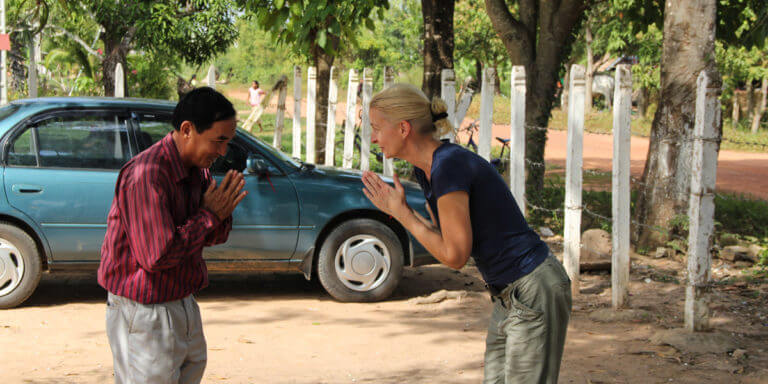
Learning Khmer language: Greeting with a little conversation
How to speak Khmer? Listen with audio: * Hello * How are you? * What’s your name? * What’s your name? * My name is * How old are you? * Goodbye * and more
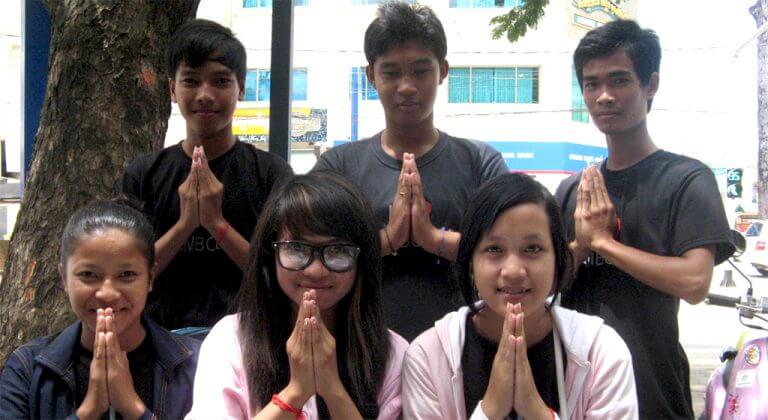
Learn Khmer – how to say “Hello” (formal) – Khmer4You
Although there are also special forms of greeting to the times of day in the Khmer language, has the general joom reab lea has become enforced.
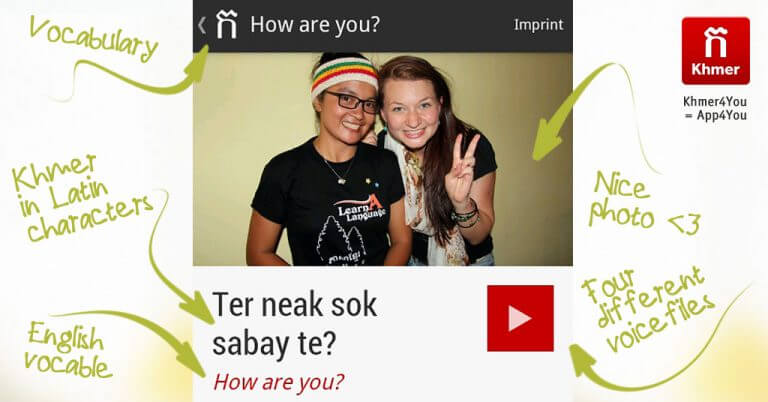
Learn Khmer – how to say “How are you” – Khmer4You
Learn Khmer and find out how to spell “How are you?” in Khmer Language. Listen to 4 different Khmer voice files of locals. Try out to spell by yourself!

Affiliate*
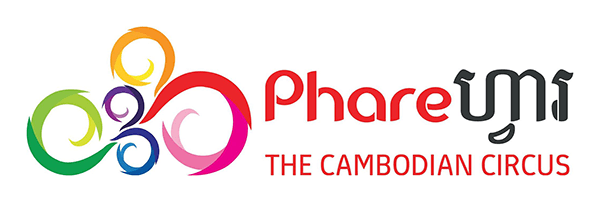
Phare, the Cambodian Circus
A highlight in Siem Reap! Buy tickets online directly on the Circus Phare website*.
Links and references with a * are an affiliate link (advertising link). If you like Visit Angkor and buy, book or subscribe to something via an affiliate link, the provider will make a small commission for Visit Angkor. Of course, there are no additional costs for you.
Join our Facebook group
International travel group with friendly people who love Cambodia. We speak English, German and a little Khmer.
By the way: We write here at Visit Angkor with a lot of passion and love. Nevertheless, it can happen that information is no longer up to date or perhaps even incorrect. We would be happy to hear from you so that we can update the information accordingly. Thank you very much!


